11th century at the 17th century
1000: The first Viscount of Marseilles was Guillaume Ier who had misfortune to live in the surroundings of year 1000, he was agitated all his life by the terror of this year which was to mark the end of the world. He thus sought to gain the sky by his good works and passed his existence in the practices of the religion to the abbey of Saint-Victor to which he made incredible generosities, and where he died.
1004 Deaths of Guillaume Ier, Viscount of Marseilles.
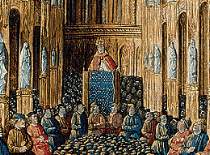 |
Under the reign of Philippe Ier, In 1095, the pope Urbain II preach the first crusade. |  |
1138 commercial Convention between Marseilles and Genoa.
1192 Hugues Fer pushes back Alphonse d'Aragon who presented itself in front of Marseilles with a small army.
1209 Hugues Iron, Viscount of Marseilles, are excommunicated and the city " prohibited " by the pope.
Under the reign of Philippe II Auguste, in 1214, the Marseillais proclaim their independence. That year began what one could call the Marseilles Republic.

Seal of the commune of Marseilles to the Middle Ages
1220 in January the town of Marseilles agrees with the bishop.
 |
1243: Constrained Raymond-Berenger Marseilles. It imposed its protection, while leaving to the inhabitants their institutions. |  |
1252 : Charles d'Anjou to the crusade with his brother the king of France Louis IX went initially (Louis Saint); but to its return he wanted to subject the rebellious cities to his authority. Charles besieged Marseilles. The seat lasted eight month with the end of which the Marseillais asked for peace. A treaty was signed, it conflicted most serious so that the Marseilles Republic was called.
1285 : Charles II with Marseille. (2/12) It was accomodated with transports of delight. It often returned there, and it mortal remains of its holy son Louis, bishop of Toulouse, which rests in Marseilles, still more attached it to our city, which it took in great affection.
Louis wire of Charles II and Marie of Hungary had been born in February 1274 in Brignoles; it entered the orders of the Minor Brothers on December 24 1295: three days afterwards, it against its will, was appointed bishop of Toulouse; it died two years later with Brignoles, August 22 1297. Its body was transported to Marseilles with the convent of the Minor Brothers, located then at the site where is today the Saint-Louis course.
It was removed from it into 1423 per Alphonse d' Aragon. The relics were restored only during the summer 1956. They were exposed a long time and venerated in theSaint-Ferréol-les-Augustins church, today the reliquaire of St Louis of Anjou was placed in the rétable of the tomb of the family of Mazenod.
1308 : Suppression of Templiers. Charles II was in Marseilles, January 13 1308, when it accepted the bubble of the pope Clément V and the letter of king de France Philippe IV Le Bel inviting it, as they did it themselves, to destroy the command of Templiers, the count of Provence carried out on January 24 the command of the pope and Templiers was dispersed; one confiscated their church, that of Saint-Ferréol which was located at the end of the street which still bears this name.
| 1309 : His/her Robert son succeeds first Sunday of August 1309 to him. |  |
Robert, wire of Charles II, was crowned in Avignon first Sunday of August 1309 by the pope Clément V. |
May 22 1319 it returned to Marseilles, with Sanche, king d' Aragon, his father-in-law. It visited the relics of his holy brother Louis, made celebrate festivals in its honor, then went to visit Aix and Provence.
November 14 1328, it had the pain to lose his son and heir, the duke of Calabria. This one left only two girls, whose Jeanne the elder one, was to succeed to him later. Robert thus instituted this princess heiress of the kingdom of Naples and Deux-Siciles, of the counties of Provence, Forcalquier and Piedmont. Jeanne was then seven years old.
The Marseillais lent oath and homage to the Jeanne princess. This one married into 1333 his/her André cousin, wire of Charobert, king de Hongrie, of the house of Anjou-Hungary, for which it expressed besides as long as he was her husband the sharpest aversion. Robert thus very believed to have envisaged when he died, January 12 1343, at the 63 years age. He was cried by his subjects which had given him the name of Good.
1337: Beginning of the One hundred Year old war
October 7 1337, to the abbey of Westminster, the king of England Édouard III publicly launches a challenge to his cousin, the king of France.
He disputes the legitimacy of Philippe VI of Valois and asserts the crown of France for itself. It is the beginning of the One hundred Year old war.
| 1347 : The queen Jeanne(One hundred Year old war) Like his grandfather, Robert, it was led with his barons and his gentlemen to the cemetery of Accoules, where the people were assembled; it y the Jura on the saints Gospels to observe the privileges and franknesses from the City. In 1381, Jeanne of Naples, countess of Provence adapts the island of written Yew. |
 |
September 28 the 1362 abbot Guillaume de Grimoard, 52 years, of theSaint-Victor monastery of Marseilles, is elected pope of Avignon under the name of Urbain V.
1370 : September 19 the pope Urbain V died in Marseilles, his body was transported to Saint-Victor where a mausoleum was raised to him. That year, Provence was again devastated by the plague and the famine.
1423 : Sit and bag of Marseilles by Alphonse V king d' Aragon. November 23, eighteen galères aragonaises came poster at the entry from Lacydon and, at the night, attacked the Midsummer's Day tower vigorously. It was burnt. The chain of the port fell, Aragonais entered the port and unloaded on the quays the avid crews of plundering. Soon the city was nothing any more but one blazing inferno. During three days, it was a general setting with bag. The king saved only the women who had taken refuge in the églises.Tout was ransacked, except for the abbey of Saint-Victor, preserved by his high walls and the strength of his resistance.
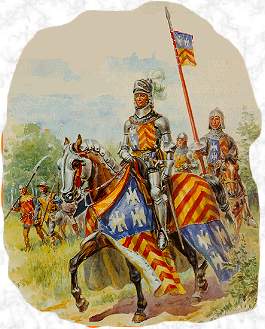 |
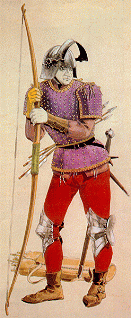 |
|
| Watercolour of Eugene Lelièpvre, representing a knight towards 1400, followed its lance. |
Archer towards 1400 |
Then the king left, carrying like trophies the relics of Louis saint, the chains of the port and part of the files. Of the same Marseillais joined them after having blackened the face not to be recognized. They were called " will mascaras ", epithet which was employed by the people like synonym of traitor.
Marseilles reappears of its ashes. Charles of Maine, which controlled Provence then, granted to the city and to his inhabitants all kinds of facilities. One rebuilds the houses and one remade ramparts more in connection with art of the war. One made come from artillery, the machines of war and the weapons. Lastly, the Marseillais, to support their trade, built many vessels.
| 1434: Good King Rene (Fine of the One hundred Year old war) Rene of Anjou east one of the most beautiful aspects of our history. This name summarizes in Provence all the virtues, because Rene was indeed best kings, therefore still speaks one about him only under this name: " good king Rene ". He was a prisoner of Philippe from Burgundy in Dijon, when he learned his accession with the throne. |
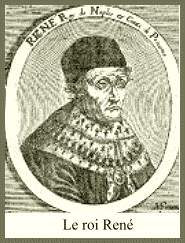 |
It was a triumph without similar. It had not certainly still done anything for its people, but it allured it first blow: it was young - it was 29 years old - it was beautiful, of an advantageous size; always illuminated features of a soft smile; it was known gracious, generous and courageous, friend of arts and poetry. All the city was pavoisée and decorated foliages; the bells rang, the processions traversed the streets.
1448: Visit Dolphin, wire of Charles VII, king de France.

Gros of silver
1452 : The plague. Rene returns to Provence. He then lived in turn Arles, Aix, Tarascon, Aygalades, Marseilles. He delivered to the pleasures life of court, painting, the worship of the humanities. He only tore off himself any to help and comfort his people decimated by the plague. Good king Rene came to spend every winter to Marseilles; he had been made build a house on the quay of the port; he had a garden near the Abbey of Saint-Victor, a country house to Aygalades, another close to Mazargues. He liked to only walk, vêtu as middle-class man, on the quays. He caused familiarly with the come first, and especially with the skippers who owe him their statutes and to which he yielded the port of Morgiou to enjoy it in any property. He also instituted at that time the " judges of the merchants " whose functions were free. It is the origin of our Commercial court.
1474 : The plague devastated Provence again. The plague harvested most of the population. In Marseilles, the viguier Honore Puget flees; but the consuls Bertrand Candolle, Antoine Aimé and Guillaume Roboli remained faithful to their post office. Assisted of king Rene, who faced the plague courageously, they managed to avoid the greatest disasters.
| Then, Rene went back to Aix, where it fell sick and died at the 72 years age, July 10 1480. Consternation was large in Marseilles. Funeral flags floated with all the windows during several days. | 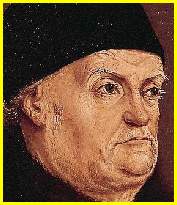 |
January 19 1482 Marseilles, adjacent Ground in Provence, ratifies its union in France. Louis XI transfers the galères from France in the city, which becomes the large French port in the Mediterranean.
In April the 1487 states of Provence decide to link this province in France. Adjacent ground, Marseilles keeps its legal and tax privileges.
1501 : Creation, by Louis XII of the Parliament of Aix.
The Marseillais believed themselves injured by this innovation. They enjoyed indeed a privilege, known as of " not extrahendo ", in virtue of which they were not to be judged apart from their city. With two recoveries, in 1511 and 1513, the king decided that all their lawsuits would be judged in Marseilles.
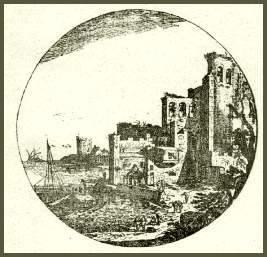
The Major of Marseilles to XVIe century
1515 : Visit of François Ier. It visited Marseilles on its return of Marignan
| 1524 : First head office of Marseilles. The army of Charles-Quint, under the commands of a traitor, the constable of Bourbon, arrived under the walls of Marseilles on August 9 1524. The ladies of Marseilles fought beside their husbands and, by their firm attitude, discouraged besieging them. The constable, in spite of his fury, was obliged to raise the seat. |  Charles-Quint |
François Ier makes the decision to strengthen Marseilles. It orders the construction of two forts. A fort on the island of Yew (December 1524-1531) and a fort on the hill of the Guard (1524?1545?).  |
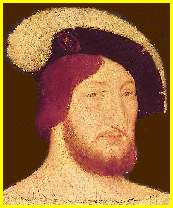 |
1533: October 28 in Marseilles, in a overflow of luxury and jewels, the son junior by François Ier, Henri, fourteen years, marries Catherine de Médicis, fourteen years, of Italian, but related minor nobility with the popes. The king of France and the pope Clément VII are present. Famous interview between François Ier and the pope Clément VII One agitated there the religious question which started to disturb the spirits, because of ceaseless progress of the Reform.
Second head office of Marseilles, by the Imperial ones, this time by Charles-Quint in person.
1545 : The doctrines Lutherans met in Provence a well prepared ground. The Of Vaud ones had especially concentrated around the Luberon mount, Gabrières, Mérindol, Peypin, the Castling of Antheron, but their pastors radiated in all Provence. In Marseilles, town of strong beliefs, Protestantism met only few members.
1560 : As long as Henri II and under the Reign of François II lived, there was well in Marseilles, especially into 1560, of popular risings followed by massacres and reprisals, but it is especially under Charles IX and Henri III that the atrocity of passions and hatreds broke out. It is difficult to follow this sad period of our annals.
November 6 1563 Catherine de Médicis is in Marseilles to pacify Provence.
1564 : Visit of Charles IX.
1580 : A vessel come from the East brought the germs of the plague. The epidemic was declared with fury and reappeared two years later. The terrified Marseillais sought a refuge in the suburbs, and, when the fugitive ones dared to re-enter, they found nothing any more but one immense mass grave.
1585 in riot April in Marseilles in favour of the League: appearance of the first religious fights in the city.
In February 1590 A Marseilles, Casaulx seizes by the force the capacity in the name of the League.
October 28 1591 A Marseilles, the Casaulx member of a league is elected first consul.
1594 : Mascaron founded the first Marseilles printing works.
October 20 1595 Obros and Rimos Provensalos de Bellaud of Bellaudière: first book printed in Marseilles.
February 17 1596 Assassination of the first consul of Marseilles, the Casaulx member of a league, by Libertat.
February 18 1596 Libertat makes swear with the duke of Own way, governor of Provence, to respect the statutes and privileges of the town of Marseilles.
In March 1596 Capitulation of the ligueuse garrison of Marseilles, bringing back peace to Provence.
August 19 1599 Creation of the first Chamber of Commerce in France, in Marseilles. At that time, the mauresques hackers sow terror in the Mediterranean basin, and in particular in the city phocéenne. The tradesmen, wishing to put a term at plunderings of which they are victims, form the first Chamber of Commerce of France in order to fight against the hackers. Gathering their finances, they engage a permanent troop charged to defend the city.
15 April 1600 Letters patent authorizing the creation of an Office of trade in Marseilles.
1603 : Assassination of the Ragueneau bishop. Arrival and installation of the Jesuits.
1622 : in November Louis XIII, in visit in Marseilles, swears to respect the privileges of the city conceded by Charles of Anjou.
1630 : Terrible epidemic. Seized of terror, the Marseillais emigrated in the suburbs, but they only succeeded in increasing the number of the contaminated localities. One never knew the exact number of the victims, but it was considerable.
1637 : The Marseillais help Richelieu to take again to the Spaniards the islands of Lérins.

The Cathedral of Marseilles (vers 1650)
1650 : The War of the Six-month period.
Gaspard de Glandevès-Niozelles was posed as a defender old traditions. Reaction of Louis XIV was severe. The consuls would be removed and replaced by a viguier, two aldermen and an assessor; the Town council would be tiny room to sixty members; the inhabitants would be disarmed and the soldiers placed among inhabitants; the guns which furnished the ramparts would be sawn and molten.
For better rivetting irons of the republican city, the king declared that he wanted a country house on the territory of Marseilles, and Mercoeur posed the first stone of this house of " countryside " which was to be called " strong the Saint Nicolas's Day ".
March 2 1660 Louis XIV enters Marseilles by the breach created in January. It does not lend the usual oath to respect the privileges of the city.
March 8 1660 Louis XIV leaves Marseilles. It leaves a garrison there.
in April 1665 Louis XIV names an intendant of the galères, Nicolas Arnoul, who fixes himself in Marseilles. I will make build a new arsenal of the galères.
In December 1665 First mention by Nicolas Arnoul of a project of enlarging of the town of Marseilles.
June 8 1666 Contract per which Roustan is committed destroying the old walls of Marseilles. It causes the general hostility of the inhabitants of the city.
March 24 the 1667 plan of enlarging of the town of Marseilles is approved by the Council of the king.
March 6 the 1668 town of Marseilles is subrogated in Roustan as project superintendent of the enlarging.
1669 : Colbert establishes, by ordinance, the frankness from the wearing of Marseilles. Commercial rebirth of Marseilles. The Rusted Intendant announced himself by great work of municipal administration, assisted by an intendant of the marine, Arnoux, and by a genious sculptor, which was also a large architect, Puget, it increases the city on the side of the Arsenal and the Course, and created the districts of Canebière and Saint-Ferréol.
 |
 |
 |